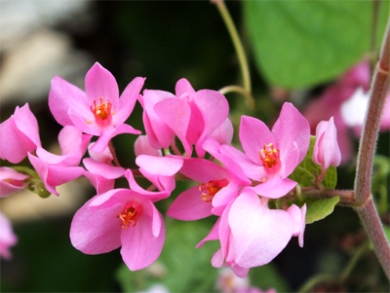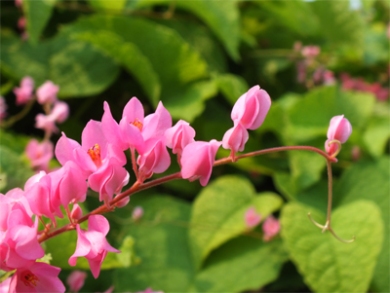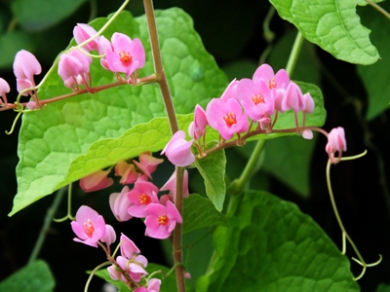
Imbiah Hill, Sentosa, 20120407
Impatiens balsamina [Garden Balsam or Rose Balsam] is a species of Impatiens native to China, Malaysia, India, Southeast Asia. In many English speaking countries they are known as “Touch me Not”, possibly due to the ripe seed pods explosively bursting when touched.

Imbiah Hill, Sentosa, 20120407
It is an annual plant growing to 20–75 cm tall, with a thick, but soft stem. The leaves are spirally-arranged, 2.5–9 cm long and 1–2.5 cm broad, with a deeply toothed margin.

Imbiah Hill, Sentosa, 20120407
Its flowers are cup-shaped, semi-double or fully double, looking like camellia blossoms, produced in the leaf axils of plants. The flowers color can be red, pink, purple, cream or white and are pollinated by bees and other insects, and also by nectar-feeding birds. The flowers are followed by explosive seed capsules.

Photo: Internet.
Medicinal uses
The flowers are used to treat snake bites and lumbago
In Malaysia, Indonesia and Philippines, the leaves are being used to heal wounds
The Chinese use the seeds to treat difficult labor, to relieve pain after labor, to increase the menstrual flow, to expel phlegm from the respiratory passages and as an antidote to fish poisoning
Source:
Wikipedia
Medicinal Plants in Singapore
1.436046
103.786057













